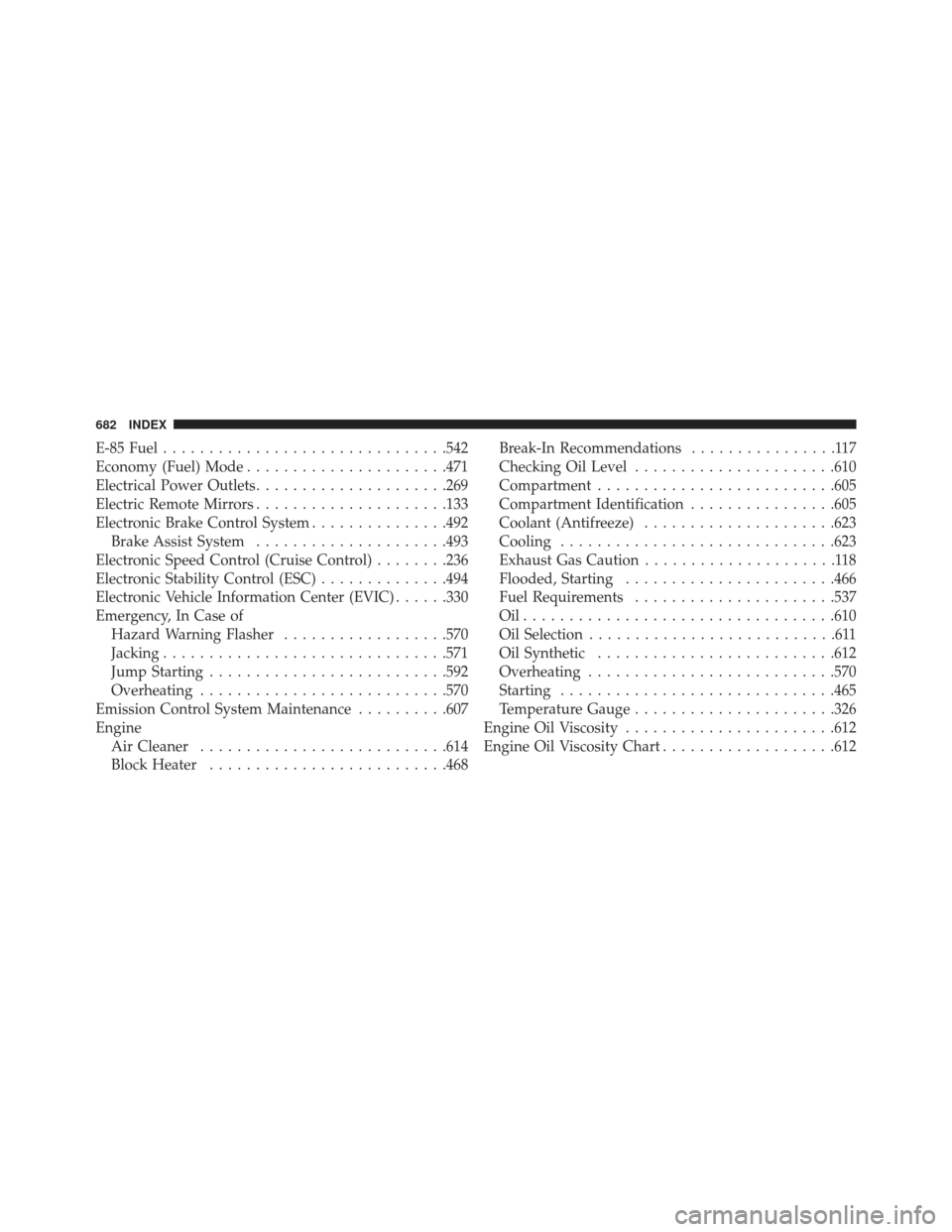Page 121 of 700

The best protection against carbon monoxide entry into
the vehicle body is a properly maintained engine exhaust
system.
Whenever a change is noticed in the sound of the exhaust
system, when exhaust fumes can be detected inside the
vehicle, or when the underside or rear of the vehicle is
damaged, have a competent mechanic inspect the com-
plete exhaust system and adjacent body areas for broken,
damaged, deteriorated, or mispositioned parts. Open
seams or loose connections could permit exhaust fumes
to seep into the passenger compartment. In addition,
inspect the exhaust system each time the vehicle is raised
for lubrication or oil change. Replace as required.Safety Checks You Should Make Inside The
Vehicle
Seat Belts
Inspect the belt system periodically, checking for cuts,
frays, and loose parts. Damaged parts must be replaced
immediately. Do not disassemble or modify the system.
Front seat belt assemblies must be replaced after a
collision. Rear seat belt assemblies must be replaced after
a collision if they have been damaged (i.e., bent retractor,
torn webbing, etc.). If there is any question regarding belt
or retractor condition, replace the belt.2
THINGS TO KNOW BEFORE STARTING YOUR VEHICLE 119
Page 612 of 700

MAINTENANCE PROCEDURES
The pages that follow contain therequiredmaintenance
services determined by the engineers who designed your
vehicle.
Besides those maintenance items specified in the fixed
maintenance schedule, there are other components which
may require servicing or replacement in the future.
CAUTION!
• Failure to properly maintain your vehicle or per-
form repairs and service when necessary could
result in more costly repairs, damage to other
components or negatively impact vehicle perfor-
mance. Immediately have potential malfunctions
examined by an authorized dealer or qualified
repair center.
(Continued)
CAUTION! (Continued)
•Your vehicle has been built with improved fluids
that protect the performance and durability of your
vehicle and also allow extended maintenance inter-
vals. Do not use chemical flushes in these compo-
nents as the chemicals can damage your engine,
transmission, power steering or air conditioning.
Such damage is not covered by the New Vehicle
Limited Warranty. If a flush is needed because of
component malfunction, use only the specified
fluid for the flushing procedure.
Engine Oil
Checking Oil Level
To assure proper engine lubrication, the engine oil must
be maintained at the correct level. Check the oil level at
regular intervals, such as every fuel stop. The best time to
610 MAINTAINING YOUR VEHICLE
Page 613 of 700

check the engine oil level is about five minutes after a
fully warmed engine is shut OFF or before starting the
engine after it has sat overnight.
Checking the oil while the vehicle is on level ground will
improve the accuracy of the oil level readings. Maintain
the oil level between the MIN and MAX markings on the
dipstick. Adding one quart of oil when the reading is at
the MIN mark will result in a MAX reading on these
engines.
CAUTION!
Overfilling or underfilling will cause oil aeration, or
loss of oil pressure. This could damage your engine.
Change Engine Oil
The oil change indicator system will remind you that it is
time to take your vehicle in for scheduled maintenance.
Refer to the “Maintenance Schedule” for further informa-
tion.
NOTE: Under no circumstances should oil change in-
tervals exceed 10,000 miles (16,000 km) or twelve
months, whichever occurs first.
Engine Oil Selection
For best performance and maximum protection under all
types of operating conditions, the manufacturer only
recommends engine oils that are API Certified and meet
the requirements of Chrysler Material Standard MS-6395.
7
MAINTAINING YOUR VEHICLE 611
Page 684 of 700

E-85 Fuel.............................. .542
Economy (Fuel) Mode ..................... .471
Electrical Power Outlets .....................269
Electric Remote Mirrors .....................133
Electronic Brake Control System ...............492
Brake Assist System .....................493
Electronic Speed Control (Cruise Control) ........236
Electronic Stability Control (ESC) ..............494
Electronic Vehicle Information Center (EVIC) ......330
Emergency, In Case of Hazard Warning Flasher ..................570
Jacking .............................. .571
Jump Starting ......................... .592
Overheating .......................... .570
Emission Control System Maintenance ..........607
Engine Air Cleaner .......................... .614
Block Heater ......................... .468Break-In Recommendations
................117
Checking Oil Level ..................... .610
Compartment ......................... .605
Compartment Identification ................605
Coolant (Antifreeze) .....................623
Cooling ............................. .623
Exhaust Gas Caution .....................118
Flooded, Starting ...................... .466
Fuel Requirements ..................... .537
Oil................................. .610
Oil Selection ...........................611
Oil Synthetic ......................... .612
Overheating .......................... .570
Starting ............................. .465
Temperature Gauge ..................... .326
Engine Oil Viscosity ...................... .612
Engine Oil Viscosity Chart ...................612
682 INDEX
Page 691 of 700

ModeFuel Saver ........................... .340
Modifications/Alterations, Vehicle ...............8
Monitor, Tire Pressure System ................528
Mopar Parts ............................ .609
MTBE/ETBE ........................... .538
Multi-Function Control Lever .................226
New Vehicle Break-In Period .................117
Occupant Restraints ........................56
Occupant Restraints (Sedan) ..................78
Octane Rating, Gasoline (Fuel) ................537
Odometer .............................. .315
Oil Change Indicator ...................... .317
Oil Change Indicator, Reset ..................317
Oil, Engine ............................. .610
Capacity ............................ .655
Change Interval ........................611 Checking
............................ .610
Disposal ............................. .613
Filter ............................... .613
Filter Disposal ........................ .613
Identification Logo ..................... .612
Materials Added to ..................... .613
Recommendation .......................611
Synthetic ............................ .612
Viscosity ............................ .612
Oil Filter, Selection ....................... .613
Onboard Diagnostic System ..................606
Opener, Garage Door (HomeLink®) ............256
Operator Manual (Owner’s Manual) .............4
Outside Rearview Mirrors ...................130
Overhead Console ........................ .251
Overhead Travel Information Center ............251
Overheating, Engine ...................... .326
Owner’s Manual (Operator Manual) .............4
10
INDEX 689